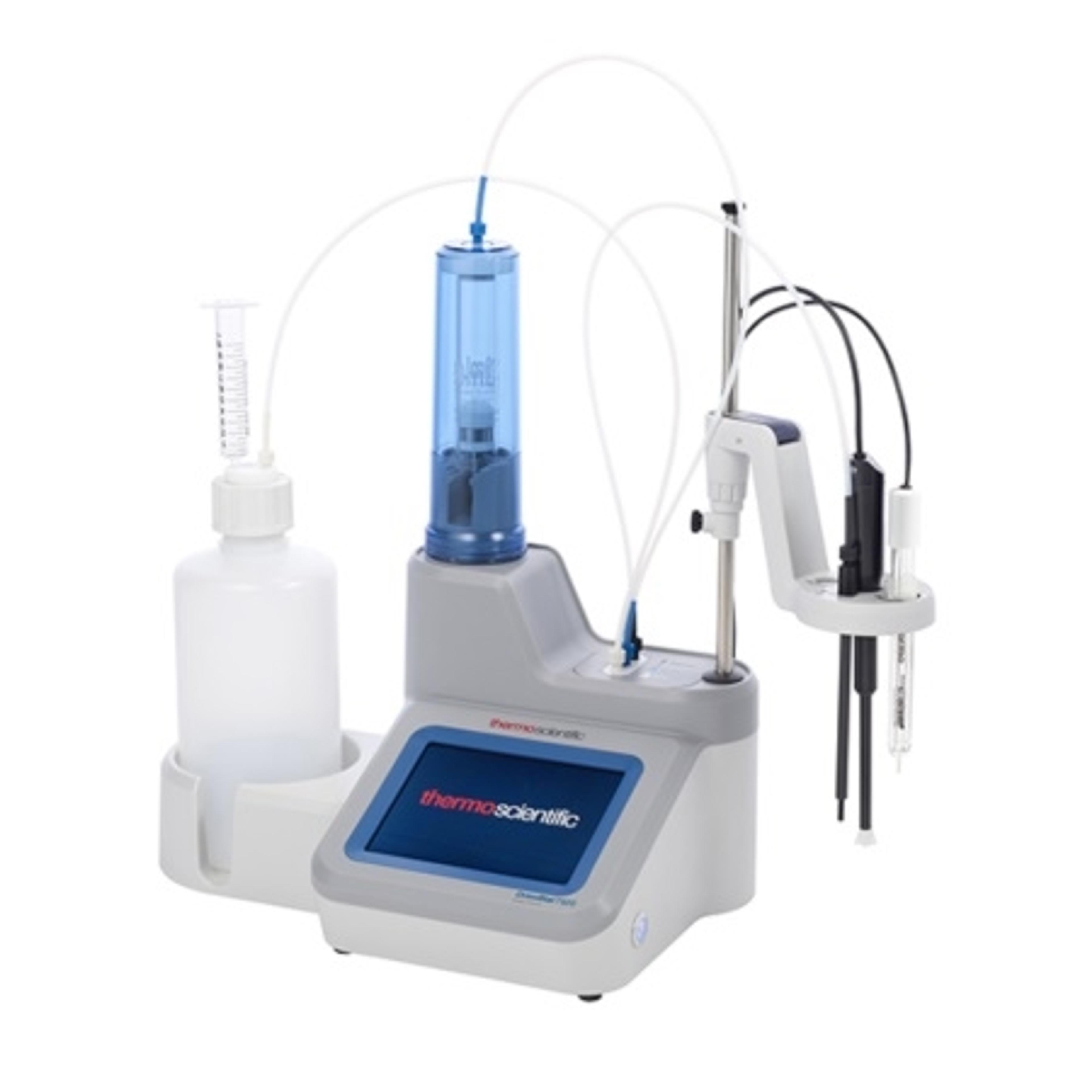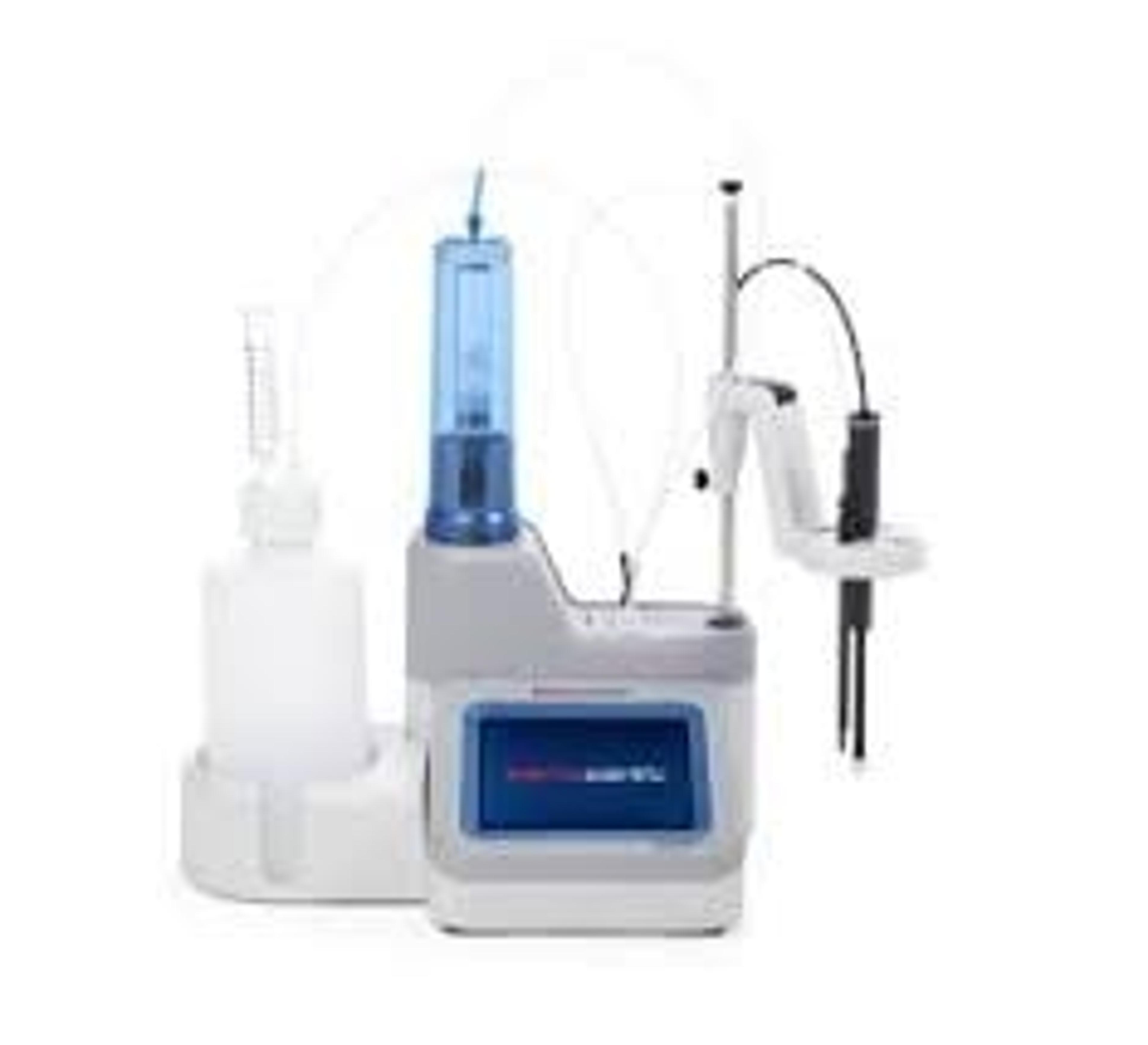Embracing automated titration in the lab
Applications expert shares the benefits of automated titration, how to properly maintain electrodes, and top tips to improve titration accuracy
4 Jan 2024

Many will recall their first titration experiment. It is likely to have been conducted during a school chemistry class, with acid and base being combined until – courtesy of a pH indicator – a sudden change of color was observed. This is a playful memory for some, but as a laborious technique that is prone to human error, it’s about time working scientists left the days of manual titration behind them.
In this article, SelectScience® speaks with Gayle Gleichauf, Applications Laboratory Manager at Thermo Fisher Scientific, to learn more about the benefits of converting from manual to automated titration. Gleichauf also provides advice on how to care for titrators and electrodes and shares top tips to improve the accuracy, reproducibility, and reliability of titration experiments.
Why titrate?
Titration is a technique used to determine the concentration of an analyte in a solution. It involves gradually adding a titrant of known concentration to a solution containing the analyte until a specific endpoint is reached. The unknown concentration of the analyte can then be calculated based on the volume of titrant added. This technique is widely employed across the food and beverage, environmental, and industrial sectors, with applications such as determining the alkalinity or calcium hardness in water, the acidity in beverages like orange juice, and the salt content in prepared foods.
Embracing automated titration
Manual titration has been performed for almost two hundred years and remains commonplace in many laboratories due to its simplicity and low setup costs. However, this approach can be extremely challenging and time-consuming due to the manual operation of the burette, the need for careful reaction monitoring, and the calculation and transfer of results. Critically, the accuracy of manual titration hinges upon the visual determination of the reaction endpoint and total dispensed volume, bringing significant scope for human error and subjectivity. The handling of chemicals and the potential for spills or broken glassware while trying to fill the burette also pose risks to the safety of lab personnel.
Automated titrators, such as the Thermo Fisher Scientific Orion Star T900 series, can effectively address these challenges. “An automatic titrator performs titrant additions and automatically determines the endpoint, which eliminates the guesswork around the use of color indicators,” explains Gleichauf. “This means it's consistent day-to-day and amongst different people in the lab. Automatic results calculation also eliminates manual calculation errors, while freeing up time for users to do other important activities. Finally, the data generated is traceable and saved for reporting purposes in archival storage.”
Automated titration is not a new idea: it was first developed in the mid-1960s and there are many auto titrators now commercially available. But what sets the Orion Star T900 series apart is its ease of use and the accuracy and precision of its dispensing system, which exceeds ISO 8655 specifications over the full range of burette volumes1. “The series consists of four models, the T910 for pH titrations such as acidity or alkalinity, the T920 for redox titrations such as sulfite, the T930 for ion titrations such as chloride or calcium, and the all-in-one T940 which consolidates all these parameters within a single device,” says Gleichauf. “We also offer titration kits, which include all the equipment needed to start performing experiments.”

Whereas performing manual titration requires a well-trained, skilled operator to generate accurate and reliable data, the T900 series facilitates intuitive setup and operation, regardless of experience level. “On-screen instructions and help menus are provided on a large color touchscreen display,” shares Gleichauf. “There is storage for up to ten user-defined methods, and these can be easily shared amongst different titrators in the lab.”
During automated titration experiments, the burette automatically fills and dispenses, minimizing the handling of corrosive materials, and titration readings are continuously recorded and evaluated to determine the titration endpoint. The resulting analysis is displayed and saved to the titrator’s internal storage. “We have automatic data capture that saves up to 100 titration data sets with time and date stamps,” she adds. “This saved data can be easily exported to a USB drive, printer, or computer , ensuring that traceable data are captured for reporting purposes and archival storage.”
Maintaining electrodes and titrators
Despite the many benefits of automated titration, there are a few considerations for users looking to make the shift. According to Gayle, the most common challenge for new users is learning the best practices for maintaining the electrode, the sensor that monitors the titration progress and signals when to end the titration. “An electrode that is well-maintained will be fast, accurate, and reliable – all the benefits that our customers look for. If not, the titrator will eventually slow down and lose sensitivity, and that will lead to poor accuracy and reproducibility,” she warns. “It also means we can't titrate as many samples in an hour, so productivity is lost. The key to good performance is proper care.”
“When we own a car, we expect to add fuel, change the oil, take it to the car wash, and get it tuned up periodically,” she continues. “So, we do the same for our electrodes. We add fill solution every day, we change the fill solution and the storage solution regularly, we keep the electrode sensor clean, and periodically tune it up by reconditioning or deep cleaning it to restore performance.”
Caring for the titrator is equally important. “A small volume flush at the start of the day can clear the tubing and the dispenser of unwanted bubbles, which might interfere with accuracy,” she says. “We rinse the dispenser, stirrer, and electrode thoroughly at the end of every titration to clean the sensor and prevent cross-contamination between samples, and we also clean and store the electrode as directed to ensure that it works well during the next round of testing.”
“If we have a titrant that's highly aggressive and we won't be using our titrator for a week or two, we can preserve the burette integrity by a simple purge and rinse operation with purified water after we use it,” she adds.
Improving titration accuracy
The accuracy of any titration is a direct result of three key data points: The volume of the titrant added at the endpoint, the amount of sample, and the concentration of the titrant. “An automatic titrator will determine, down to a microliter, the exact volume of the titrant added, so customers who switch to an auto titrator will immediately improve their accuracy by the high precision of the titrant volume measured. ,” asserts Gleichauf. “However, users remain responsible for measuring the exact amount of sample and for ensuring the exact concentration of the titrant.”
When weighing samples, she emphasizes the importance of using a balance that's serviced and calibrated regularly, and where volumes are required, she advises using Class A glassware or a pipettor with disposable tips. Purchasing a certified titrant can ensure an exact concentration is used, but “that applies to when the bottle is first opened,” she warns. “As time passes, the concentration of the titrant can change. Therefore, it is best to standardize the titrant on a regular basis to determine the exact value at the time of use and increase the accuracy of the titration results. This is simple to automate by choosing the standardization option in the titration method.”
Gleichauf concludes by signposting an array of resources available to help users maximize the performance and longevity of automated titration equipment. “We have an excellent website at thermofisher.com/titrator with videos, app notes, case studies, white papers, brochures, specifications, and ordering information,” she says. “We also plan to have a complete titrator learning center soon that covers the entire titration workflow with how-to videos and written materials. And that should be very helpful, particularly for those new to automated titration.”
High accuracy and precision of dispense volumes on the Orion Star T900 series automated titrators (2021) Thermo Fisher Scientific [White Paper]




